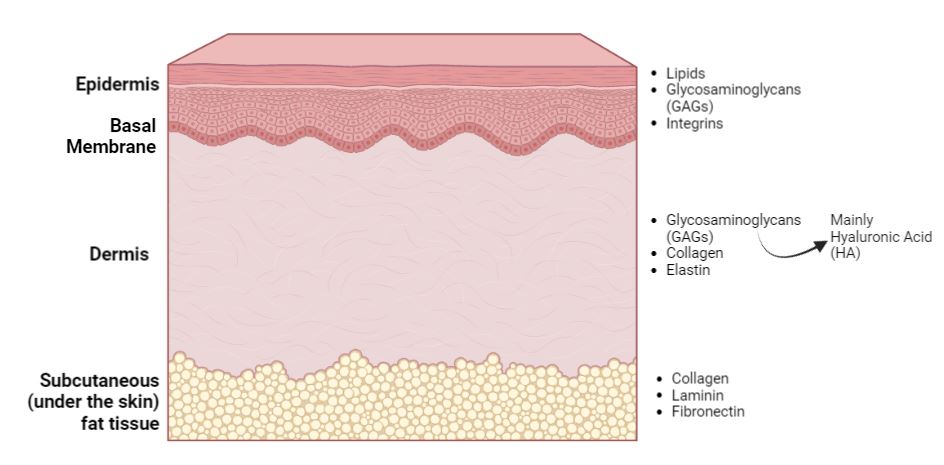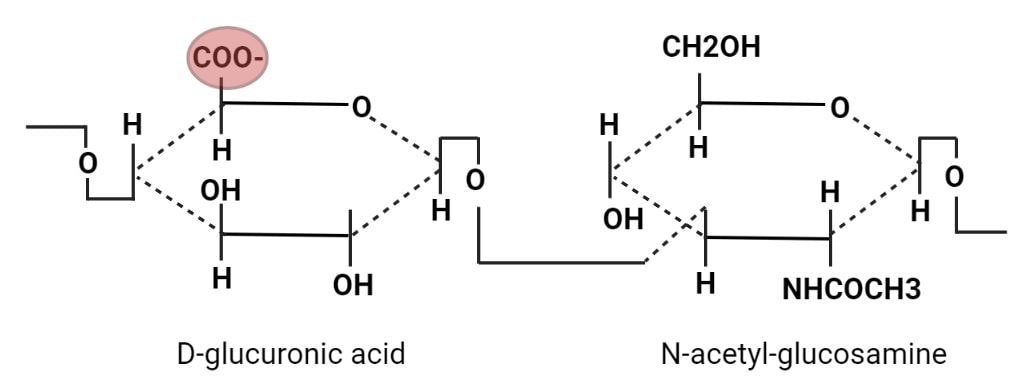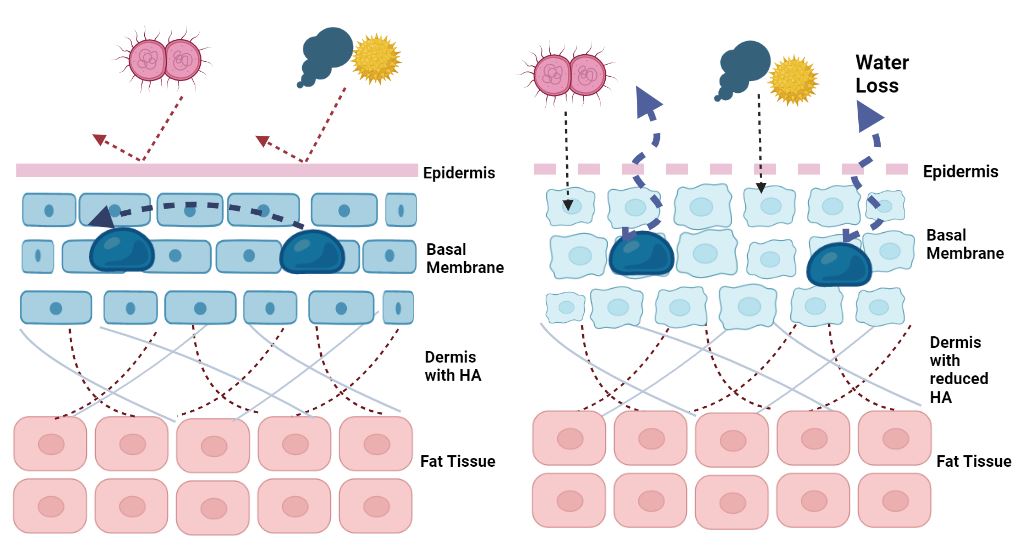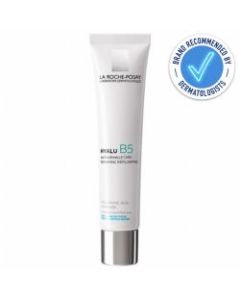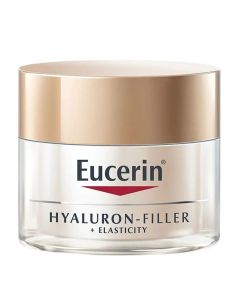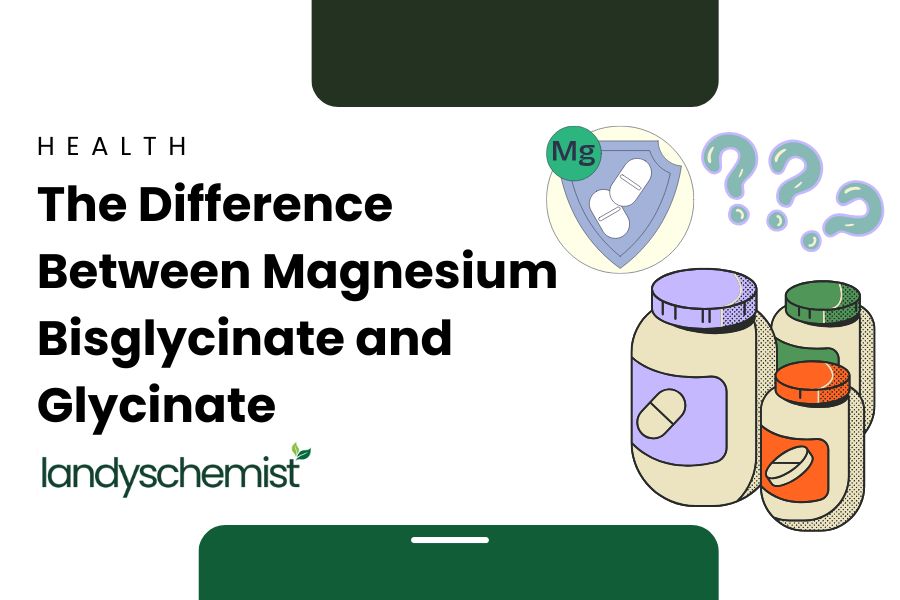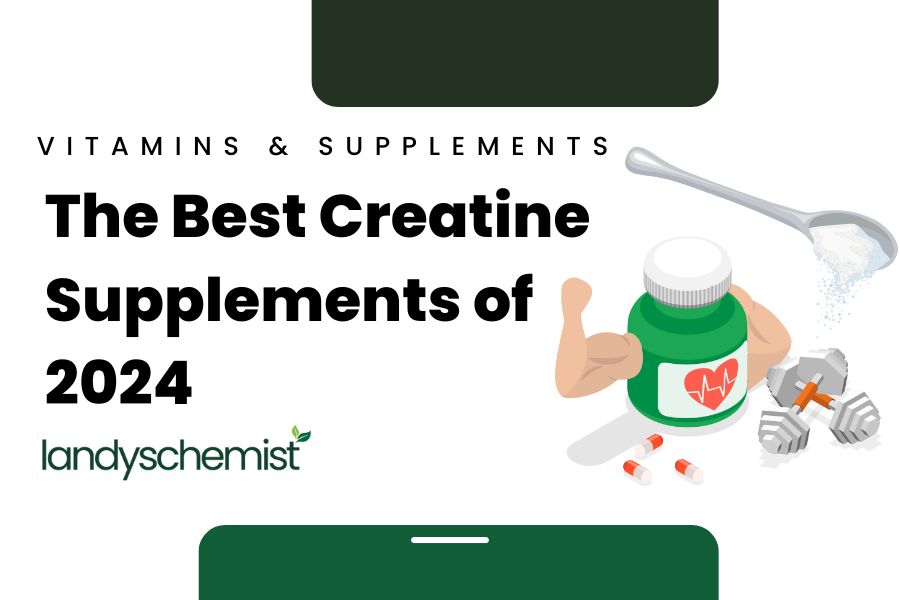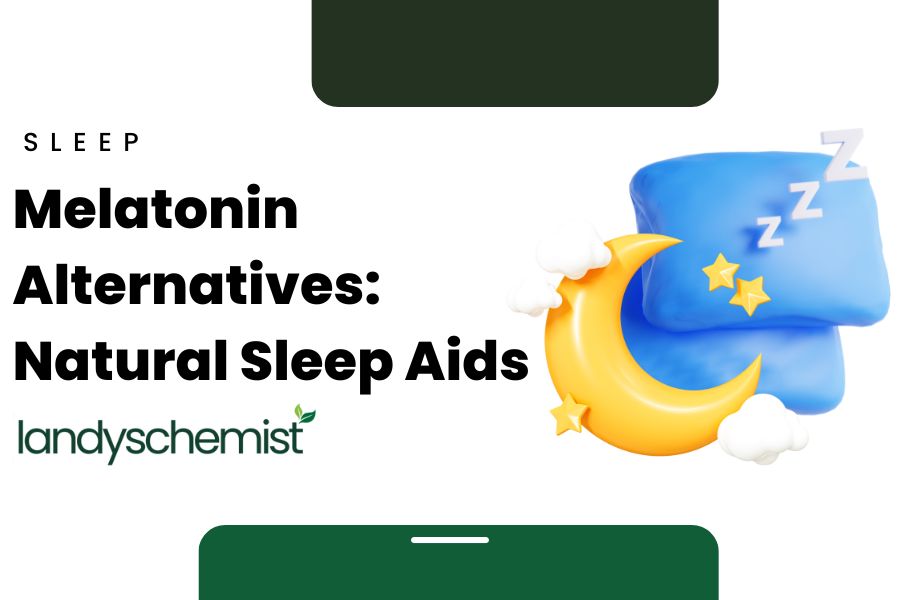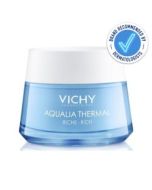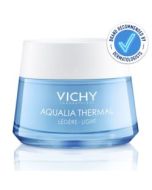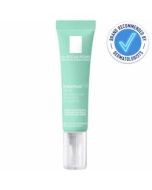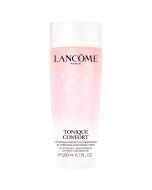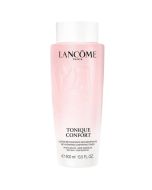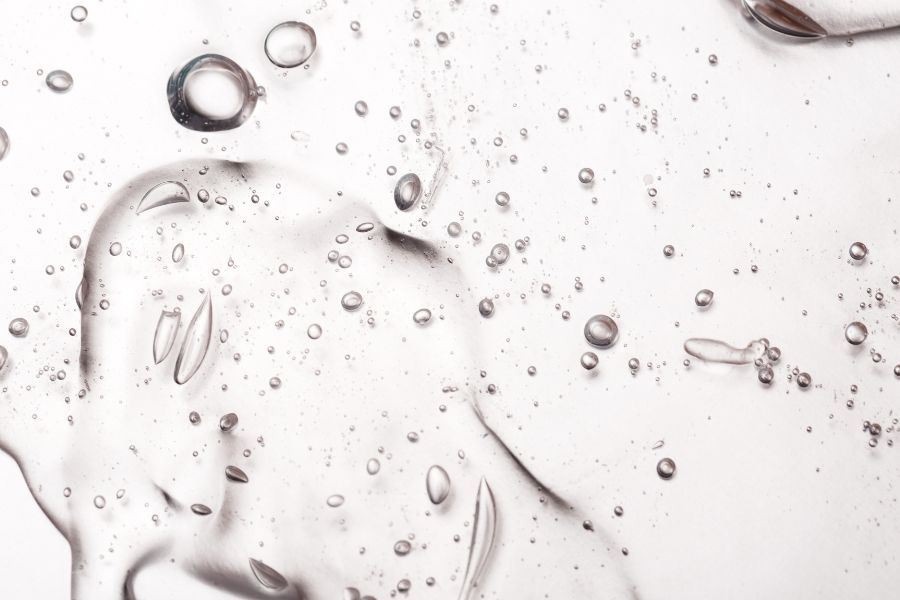
The Skincare Ingredients Guide: Hyaluronic Acid
Contents
- What is Hyaluronic Acid?
- Hyaluronic Acid Structure and Function
- What Factors can impact Hyaluronic Acid Levels?
- Signs that your skin may be producing less hyaluronic acid:
- Hyaluronic Acid as a skincare ingredient
- Benefits of Hyaluronic Acid in Skincare
- How to use Hyaluronic Acid:
- How long can Hyaluronic Acid take to work on the skin?
- Skincare ingredients that work well with Hyaluronic Acid:
- Product Recommendations:
- Catalog Products List
- Summary:
Within the world of skincare, there are a wide array of ingredients touted for their transformative properties. Amongst them, Hyaluronic Acid (HA) often reigns supreme, captivating the attention of skincare enthusiasts and experts alike. Known for its hydrating and moisture retaining properties, Hyaluronic Acid has been sought after in numerous products including serums and moisturisers to provide that plumping, rejuvenated effect.
So, what exactly is Hyaluronic Acid and why has it become such a coveted ingredient in the quest for youthful-looking, radiant skin?
In this blog, we will delve into the world of hyaluronic acid, exploring what it is and its numerous benefits to discover the capabilities of hyaluronic acid and how it can work synergistically with other ingredients!
What is Hyaluronic Acid?
Hyaluronic Acid (HA) is also known as hyaluronan or hyaluronate is a gel-like substance that is naturally produced within the body, particularly throughout the eyes, joints, and connective tissues. It helps keep skin hydrated, plump,is a major component of the extracellular matrix (ECM) of the skin (shown below) and is present within every mammalian tissue. The ECM is responsible for regulating structural integrity and development as well as tissue repair. Hyaluronic Acid is involved in many signalling pathways including those involved in embryonic development, wound healing, inflammation, and cancer. It also acts as a space filler to maintain hydration and regulate the differentiation of cells into different types.
This Diagram outlines the skin and the components of its extracellular matrix. The dermis which composes the bulk of the skin has a rich Extracellular Matrix (ECM) which is composed predominantly of elastin, collagen, and hyaluronic acid.
Hyaluronic Acid Structure and Function
Hyaluronic Acid (HA) is a linear glycosaminoglycan polymer. This means that it contains long repeating, unbranched units of carbohydrates or disaccharide (sugar) chains. The two sugars which make up hyaluronic acid are D-glucuronic acid and N-acetyl-glucosamine. The fact that hyaluronic acid is hydrophilic (Water loving) and contains a carboxylate group (circled in red) which is negatively charged means that it can retain large amounts of water. This makes hyaluronic acid a humectant, capable of binding up to 1000 times its weight in water. Its flexible structure means that it can entrap lots of water.
As the chain lengths can vary, the molecular weight of hyaluronic acid can have a broad range allowing it to penetrate various depths of the skin. Studies have shown that low molecular weight hyaluronic acid can pass through the stratum corneum (epidermis) as opposed to the impermeable higher molecular weight hyaluronic acid.
Higher molecular weight hyaluronic acid is present on the surface of the skin to act as a moisture barrier. Lower molecular weight hyaluronic acid can penetrate deeper within the skin to support epidermal moisture and permeate within the skin’s layers.
What Factors can impact Hyaluronic Acid Levels?
There are several factors that can influence the levels of hyaluronic acid within the skin.
Ageing
Hyaluronic Acid levels naturally decrease as we age. This can lead to reduced skin hydration and elasticity. As we age, the metabolic power of our cells decreases, and our skin's own production of hyaluronic acid will start to diminish. This is because as we age, there is a decrease in the synthesis of hyaluronic acid, and an increase in the degradation of hyaluronic acid, from an increase in the enzymes which degrade it: hyaluronidase as well as oxidative stress associated with ageing.
UV Radiation
Studies have shown that repeated exposure to UV Rays in the long term can cause hyaluronic acid levels to drop because it increases the metabolism of hyaluronic acid. UV rays can trigger the production of enzymes which break down hyaluronic acid, causing its concentration to decrease.
Inflammation
Inflammatory skin conditions such as eczema, acne or psoriasis can affect HA levels due to the synthesis of hyaluronic acid being disrupted. Inflammation triggers the release of certain chemical messengers called cytokines part of an immune response. Research has shown that these can increase the expression and activity of hyaluronidases which are responsible for the degradation of hyaluronic acid. These pro-inflammatory cytokines can also inhibit hyaluronan synthesis.
Hormonal Changes
Fluctuations in hormones, particularly during menopause can cause a decrease in oestrogen levels. Oestrogen is a hormone which stimulates hyaluronic acid production through the activation of the enzymes hyaluronan synthases (HAS). As menopause approaches, oestrogen levels decline. This has been associated with reduced synthesis of hyaluronic acid and decreased skin hydration.
Lifestyle and Environmental Factors
Habits such as smoking, poor nutrition and environmental factors can cause oxidative stress which can negatively impact hyaluronic acid levels in the skin. Molecules called free radicals are found in pollutants such as cigarette smoke and can cause inflammation, decrease synthesis and increase degradation. The degradation caused by free radicals can break down the hyaluronic acid molecules.
Signs that your skin may be producing less hyaluronic acid:
When the skin produces less hyaluronic acid, it loses its ability to effectively bind in water, causing the skin to become dry and feel tight. Decreasing levels of hyaluronic acid in the dermis can lead to a compromised skin barrier which can cause water loss, and allow irritants and pollutants to penetrate the skin causing damage shown below.
Reduced Moisture Retention
As Hyaluronic Acid is a hydrophilic molecule which attracts and retains water, it can contribute to the hydration of the skin. When there are decreased levels in the dermis, it can result in drier skin which can be rough, tight, or flaky, and show an increase in fine lines and wrinkles. Reduced moisture retention can also lead to an increase in trans-epidermal water loss (TEWL).
Impaired skin barrier function
Hyaluronic acid plays a role in maintaining the integrity of the skin barrier to protect the skin against environmental stressors and moisture loss. When there is low levels of hyaluronic acid, the dermis can be compromised, causing an increase in trans-epidermal water loss (TEWL) which can compromise the integrity of the skin barrier making it more susceptible to external irritants and water evaporation.
Decreased skin elasticity
Hyaluronic Acid contributes to skin elasticity by providing support and hydration to collagen and elastin fibres in the dermis. Reduced levels of hyaluronic acid can lead to a loss of skin elasticity, resulting in less resilient and firm skin and a rough texture.
Thinning of the Dermis
Hyaluronic Acid is involved in the structure and composition of the extra cellular matric (ECM) in the dermis. When there is a decline, the dermis has less structural support to maintain tissue volume and so can contribute to thinning.
Hyaluronic Acid as a skincare ingredient
Sourcing Hyaluronic Acid
When it comes to skincare, hyaluronic acid is now obtained from external sources, most commonly through bacterial fermentation.
Hyaluronic acid (HA) is produced through a multi-step process. It begins with fermenting specific bacteria, such as Streptococcus zooepidemicus or Bacillus subtilis, in a controlled environment. The fermentation process generates HA as a byproduct. The HA-containing solution is then purified to remove impurities, and to create hyaluronic acid of varying molecular weights. The final HA product undergoes rigorous quality control testing to ensure its purity and safety. These production steps are crucial in obtaining HA for various applications in skin care, medicine, and cosmetics.
How Hyaluronic Acid works in skincare:
Hyaluronic Acid is known for its remarkable ability to hydrate and improve the skin’s texture. It works by retaining moisture providing multiple benefits for the skin.
HA molecules come in different molecular weights. Lower molecular weight hyaluronic acid has smaller molecules which are able to penetrate the skin's surface and deliver hydration at a cellular level. It helps to replenish the skins moisture content from within to promote plumpness and smoothness. Higher molecular weight hyaluronic acid forms a barrier on the skin’s surface to protect, prevent moisture loss and maintain hydration levels.
Research has shown that lower molecular weight hyaluronic acid is more effective in skincare due to its deeper penetration and ability to provide long-lasting hydration. As a result, products containing low molecular weight hyaluronic acid products tend to be more expensive. This is partly due to the extraction and production process which requires additional refinement and technology.
The concentration of hyaluronic acid in a skincare product also plays a role in its efficacy. Higher concentrations can provide more intense hydration and improve skin texture. However, formulations with a higher concentration can be more expensive due to the cost of production and sourcing.
Benefits of Hyaluronic Acid in Skincare
Hydration
Hyaluronic Acid has an exceptional ability to retain moisture, making it a powerful humectant, so it can hydrate the skin and improve its moisture content. HA comes in different molecular sizes. Larger HA molecules, despite being the best at binding water and offering hydration, cannot penetrate the skin. When applied topically, these molecules sit on top of the skin, offering hydration only at the very surface. Smaller HA molecules, which bind less water than larger HA molecules, can penetrate deeper into the skin into the epidermis. Research has shown that lower molecular weight hyaluronic acid can significantly reduce wrinkle depth. For maximum surface hydration, look for a product that contains HA molecules in a variety of sizes.
Space Filling Capacity
HA is also used in dermal fillers, many of which are composed of HA in an injectable gel form. HA fillers add volume by physically filling the area where they are placed, as well as by drawing water to enhance the filling effect. HA fillers can be used to address a multitude of cosmetic concerns, including lifting the cheeks, softening deeper folds and creases around the mouth and chin, improving the look of sunken undereye circles, and enhancing the lips.
Skin Barrier Enforcement
Hyaluronic Acid can strengthen the skin’s natural barrier function. It can retain moisture, protect the skin from environmental stressors and prevent transepidermal water loss. By fortifying the skin barrier, HA promotes a more resilient barrier to protect the epidermis from free radicals generated from environmental stressors. HA thickens the epidermis and prevents the build-up of dead skin cells.
Anti-ageing Effects
HA has anti-ageing properties and helps improve the appearance of fine lines and wrinkles by promoting hydration and supporting collagen synthesis. These effects help contribute to a plumper complexion. A 2021 study to measure the effectiveness of hyaluronic acid showed that it improved hydration, smoothness, and plumping and reduced the appearance of fine lines and wrinkles.
Soothing and Calming Properties
Thanks to its moisture retention and hydrating properties, it also has soothing and calming properties making it suitable for dry, sensitive and irritated skin. It helps to alleviate redness, inflammation and discomfort.
How to use Hyaluronic Acid:
As hyaluronic acid is hydrating, it can be applied twice a day, topically in the morning and evening as part of your skincare routine. It is best to apply when the skin is still slightly damp to allow the products to absorb into the skin optimally. It is safe and beneficial to be used daily for maintaining optimal hydration of the skin.
How long can Hyaluronic Acid take to work on the skin?
The time it takes for hyaluronic acid to work on the skin can vary depending on factors including the formulation, skin type and intended outcome. HA has a unique ability to attract and retain water providing immediate hydration. When it is applied topically, it can quickly bind to water and plump the skin providing an immediate effect often noticeable shortly after application. Whilst it can provide instant hydration, with consistent use over time it can improve the moisture balance of the skin, elasticity, and overall texture. It is recommended to use HA products regularly for several weeks to see cumulative benefits.
Skincare ingredients that work well with Hyaluronic Acid:
Hyaluronic Acid is versatile and works well when combined with other ingredients including niacinamide, vitamin C, retinoids, and ceramides.
Vitamin C
Vitamin C is an antioxidant which helps brighten the skin, even out skin tone and promote collagen synthesis. When combined with hyaluronic acid, it can have a skin-rejuvenating effect. The mixture can help to moisturise and protect the skin from photoaging damage.
Retinol
Retinol is a form of vitamin A which can increase collagen production, improve skin texture and reduce the appearance of wrinkles. When combined with hyaluronic acid, it can smooth the complexion and even out skin texture. Hyaluronic Acid, when used with retinol can help soothe and reduce the likelihood of retinol-induced irritation.
Peptides
Peptides are small protein fragments which can improve collagen synthesis, reduce wrinkles, and enhance skin firmness. Combining peptides with hyaluronic acid can have anti-ageing effects to rejuvenate the skin.
Ceramides
Ceramides are lipids which help to maintain the skin barrier, improve moisture retention, and provide protection against environmental aggressors and free radicals. When combined with hyaluronic acid, it can enhance the hydrating and barrier-repairing properties to plump the skin.
Niacinamide
Niacinamide,also known as vitamin B3, improves skin texture, reduces hyperpigmentation, and regulates sebum production. When combined with hyaluronic acid it can hydrate and rejuvenate the skin. This combination is effective for oily or acne-prone skin as the skin can be hydrated whilst addressing excess oil.
Product Recommendations:
Hyaluronic Acid plays an important role in this moisturiser to lock in hydration, reduce the appearance of fine lines and wrinkles and improve skin hydration and texture.
High and low molecular weight hyaluronic acid helps to moisturise and plump wrinkles, penetrating deeper within the skin. High molecular Hyaluronic Acid improves hydration and soothes the outermost layers of the skin, whilst the lower molecular hyaluronic acid penetrates into the epidermal skin layers to reduce the appearance of wrinkles.
Summary:
- Hyaluronic Acid is gel-like molecule which naturally occurring in the skin, primarily in the dermis. It has an exceptional ability to attract and retain moisture, contributing to the skin’s hydration and plumpness.
- It helps to improve hydration, supports the skin's natural barrier function, preventing moisture loss and maintaining optimal skin health, and it can help improve the skin's elasticity and firmness, reducing the appearance of fine lines and wrinkles.
- Its hydrating properties make it suitable for dry and dehydrated skin, replenishing moisture and restoring the skin's natural moisture barrier. HA is also effective in addressing signs of aging, such as fine lines and wrinkles, as it helps to plump and firm the skin. Additionally, HA can be beneficial for sensitive or irritated skin, providing soothing and calming effects.
By Saarah Mengrani, MSc Biotechnology

